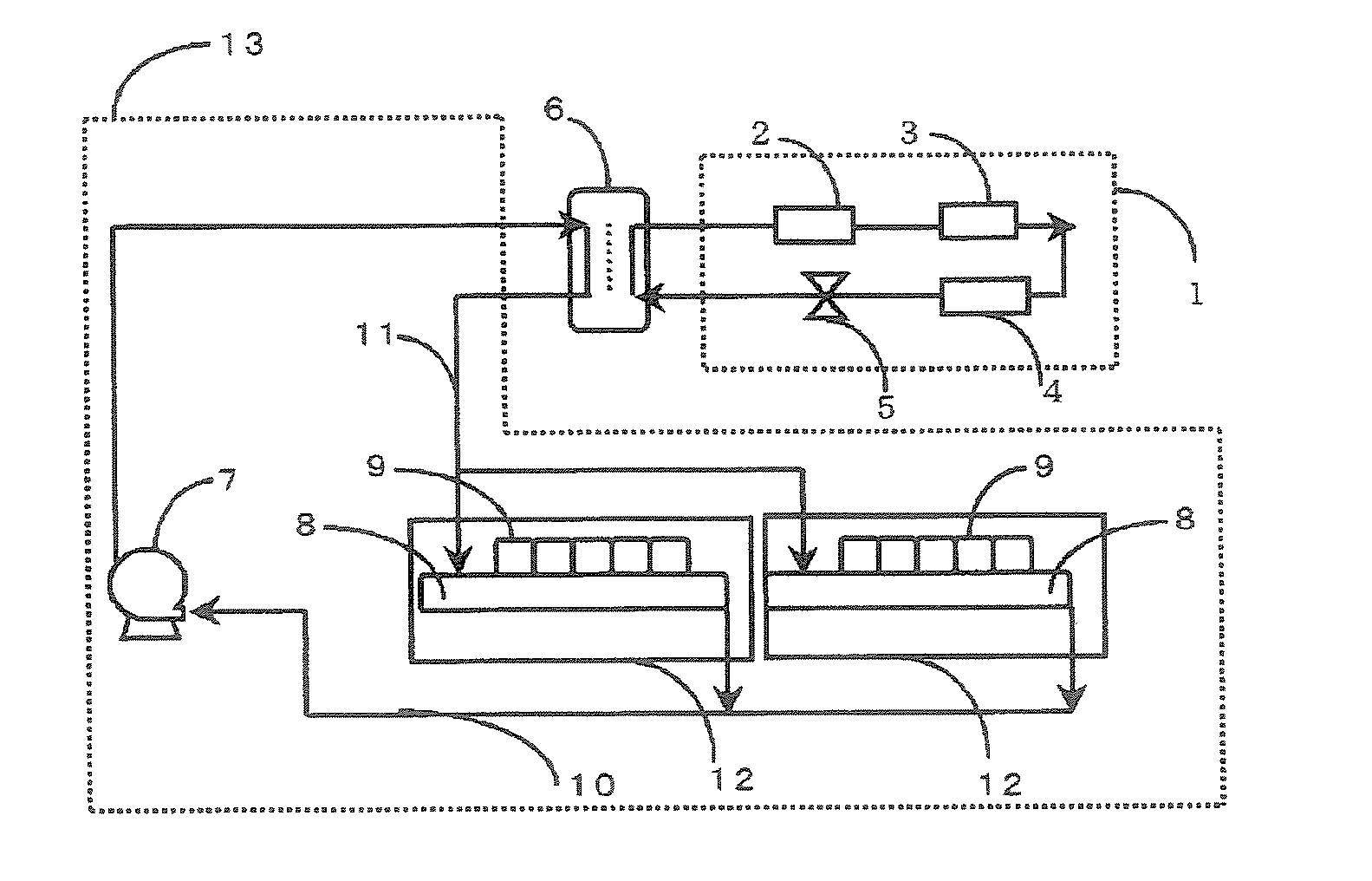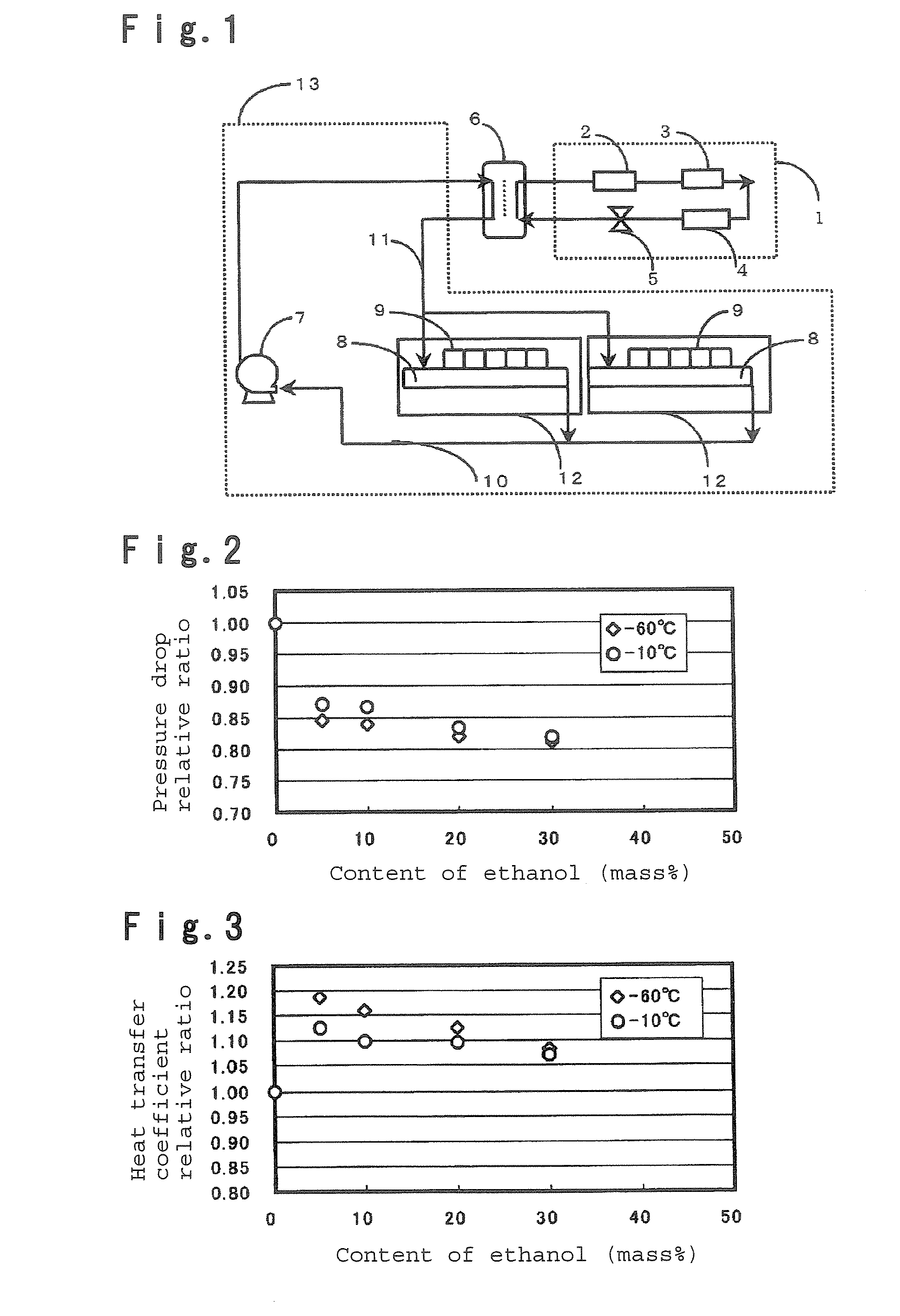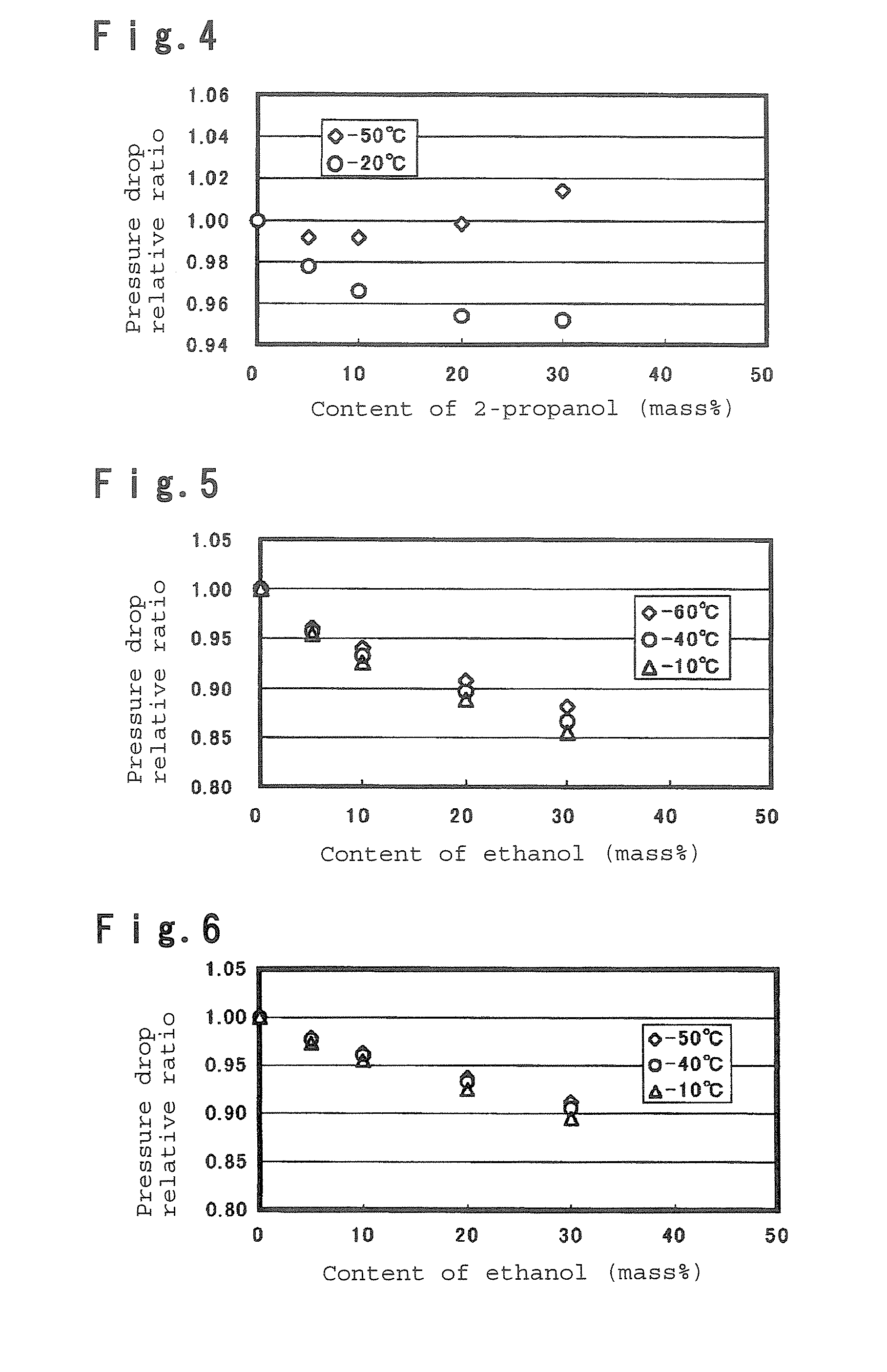Secondary circulation cooling system
a cooling system and circulation technology, applied in refrigeration machines, lighting and heating apparatus, chemistry apparatus and processes, etc., can solve the problems of large power consumption, poor energy efficiency, commercial use, etc., and achieve the effect of reducing power consumption, small pressure drop, and reducing power consumption
- Summary
- Abstract
- Description
- Claims
- Application Information
AI Technical Summary
Benefits of technology
Problems solved by technology
Method used
Image
Examples
examples
[0062] Now, the present invention will be described with reference to Examples. Examples 2 to 9, 11 to 14, 16 to 19 and 21 to 24 represent the present invention, and Examples 1, 10, 15 and 20 are Comparative Examples.
examples 1 to 5
[0063] As the fluorinated ether, CF2HCF2OCH2CF3 (hereinafter referred to as HFE-347) was selected, and as the alcohol, ethanol was selected. With respect to each of the five solutions shown in Table 1, the pressure drop relative ratio P to HFE-347 (at −10° C. and at −60° C.) was calculated.
[0064] Pressure drop relative ratio P=Δpx / Δp0
[0065]Δpx: Pressure drop of a mixed solution of HFE-347 and ethanol
[0066]Δp0: Pressure drop of HFE-347
[0067]Δpx and Δp0 were calculated based on the formula 2. The results are shown in FIG. 2.
[0068] Further, with respect to each of the five solutions shown in Table. 1, the heat transfer coefficient relative ratio H to HFE-347 (at −10° C. and at −60° C.) was calculated.
[0069] Heat transfer coefficient relative ratio H=hx / h0
[0070] hx: Heat transfer coefficient of the mixed solution of HFE-347 and ethanol
[0071] h0: Heat transfer coefficient of HFE-347
[0072] hx and h0 were calculated based on the formula 1-1.
The results are shown in FIG. 3.
[0073...
examples 6 to 9
[0075] As the fluorinated ether, CF2HCF2OCH2CF3 (hereinafter referred to as HFE-347) was selected, and as the alcohol, 2-propanol was selected. With respect to each of the five solutions shown in Table 2, the pressure drop relative ratio P to HFE-347 (at −20° C., and at −50° C.) was calculated in the same manner as in Examples 1 to 5. The results are shown in FIG. 4. From FIG. 4, it is evident that the pressure drop decreases by mixing 2-propanol. In Example 9, the pressure drop is slightly increased, but the composition in Example 9 has a large heat transfer coefficient, and it can be said that the overall performance of the secondary coolant is excellent.
TABLE 2Ex. 1Ex. 6Ex. 7Ex. 8Ex. 9Mass ratio of100 / 095 / 590 / 1080 / 2070 / 30HFE-347 / 2-propanol
PUM
 Login to View More
Login to View More Abstract
Description
Claims
Application Information
 Login to View More
Login to View More - R&D
- Intellectual Property
- Life Sciences
- Materials
- Tech Scout
- Unparalleled Data Quality
- Higher Quality Content
- 60% Fewer Hallucinations
Browse by: Latest US Patents, China's latest patents, Technical Efficacy Thesaurus, Application Domain, Technology Topic, Popular Technical Reports.
© 2025 PatSnap. All rights reserved.Legal|Privacy policy|Modern Slavery Act Transparency Statement|Sitemap|About US| Contact US: help@patsnap.com



